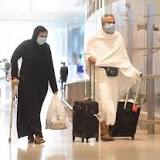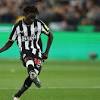Scholars Doubt New Theory on Anne Frank’s Betrayal

- Coming in January
- Best Books Through Time
- Critics’ Reviews
- Editors’ Choice
Supported by
A new book that names a Jewish notary as a suspect made headlines. Now that World War II and Holocaust experts have had time to review its claims, many doubt the methods and conclusion.
- Read in app
-
Send any friend a story
As a subscriber, you have 10 gift articles to give each month. Anyone can read what you share.
Give this article - Share
- Read in app

AMSTERDAM — “Who betrayed Anne Frank?” is a common question visitors ask at the Anne Frank House, a museum built around the secret annex where the teenage diarist hid from the Nazis for more than two years.
New clues hadn’t surfaced in decades, but Pieter van Twisk, a Dutch media producer, was sure that modern crime-solving technologies, like artificial intelligence, big-data analysis and DNA testing could arrive at better conclusions than previous investigations.
Six years ago, van Twisk assembled about two dozen researchers for a so-called “cold case team,” with Vince Pankoke, a retired F.B.I. detective from South Florida, taking the lead. Ultimately, high-tech tools played a minimal role in their findings, which the investigators arrived at largely through re-exploring old leads. They hired the Canadian author Rosemary Sullivan to write a book, “The Betrayal of Anne Frank,” about the process, which she presented like a true-crime procedural. The book was published Tuesday in the United States and the Netherlands.
The team settled on a suspect: Arnold van den Bergh, a Jewish notary from Amsterdam, who died of throat cancer in 1950. The name wasn’t new to Anne Frank experts. In 1945, Anne’s father, Otto Frank, the only family member who survived the Holocaust and returned to Amsterdam, received an anonymous note that said van den Bergh had alerted the Nazis to their hide-out.
Otto handed the note over to a Dutch detective who conducted an investigation in 1963 into whether the family was betrayed, but the detective dismissed it. David Barnouw, the author of the 2003 book “Who Betrayed Anne Frank?,” said he had also considered van den Bergh as a suspect but ruled him out because, beyond the note, there was no evidence that he had played a role.
Barnouw was among several Dutch historians who voiced concerns about the findings of van Twisk’s team. As part of the publisher’s media strategy, the conclusions were not shared widely. Anyone who contributed to the investigation had to sign nondisclosure agreements, and the results were kept largely secret until a news blitz early this week, opening with a “60 Minutes” television segment on Sunday.
Many news organizations picked up the report uncritically, naming van den Bergh as the betrayer, without any expert response. MailOnline, the website of the British Daily Mail newspaper, ran the story with a headline beginning, “Anne Frank was betrayed by a JEWISH notary.”
Emile Schrijver, the director of Amsterdam’s Jewish Cultural Quarter, said he got an advance copy of the book late last week. “The evidence is far too thin to accuse someone,” he said. “This is an enormous accusation that they made using a load of assumptions, but it’s really based on nothing more than a snippet of information.”
By Tuesday, after experts on Anne Frank, World War II and the Holocaust had a chance to consider the findings, many said they doubted the book’s theory.
“They came up with new information that needs to be investigated further, but there’s absolutely no basis for a conclusion,” said Ronald Leopold, the Anne Frank House’s executive director. He added that the museum would not be presenting the findings as fact, but perhaps as one of several theories, including others that have been considered over the years.
“The Betrayal of Anne Frank” says that van den Bergh had a list of Jews in hiding that he got from the Amsterdam Jewish Council, an organization on whose board he once sat. The Nazi administration in the Netherlands established the council in 1941 to control the Jewish population, appointing its leaders from other Jewish organizations that they banned. The council’s staff were given stamps in their identity cards that forestalled their deportation, until 1943, when the organization was disbanded and its employees arrested.
But there is no evidence that the council had any such list, said Laurien Vastenhout, a researcher at the NIOD Institute for War, Holocaust and Genocide Studies, who is an expert on the Amsterdam Jewish Council’s history. “Why would the people in hiding provide the Jewish Council with their addresses?” Vastenhout said.
Leopold, the Anne Frank House director, said he had heard rumors that the council may have kept lists of addresses, “but only from unreliable sources.” He added, “The Jewish Council was under special scrutiny from the occupying forces,” and that “it would be very, very risky to keep lists like that.”
Van Twisk confirmed that his team has not found a list. But, he added, “we have several sources that mention the existence of the lists.”
“Circumstantial evidence is also evidence,” he said.
Because the Jewish Council was under the thumb of the Nazis as they implemented their genocidal program in the Netherlands — which resulted in the murder of 75 percent of the Dutch Jewish population — it has long been the target of suspicion and victim blaming.
The issue of Jewish culpability in the Holocaust remained an open question through the 1960s, reignited by Hannah Arendt, who wrote in her book, “Eichmann in Jerusalem,”that the implementation of the Nazis’ Final Solution would not have been possible “without Jewish help in administrative and police work.”
“To a Jew this role of the Jewish leaders in the destruction of their own people is undoubtably the darkest chapter of the whole dark history,” she wrote, in a famous passage that generated enormous criticism.
Nearly 15,000 Dutch citizens were convicted of some form of collaboration in the postwar courts, about 10 percent of them for informing on Jews in hiding. Of those, 152 resulted in death sentences, of which 40 were carried out. Only one of the convicted collaborators was Jewish: Ans van Dijk, who was put to death by firing squad in 1948 for betraying 145 Jews.
Vastenhout said that if the investigators put so much of their argument’s weight on the Amsterdam Jewish Council, an organization around which so many misconceptions already existed, they should have been “very careful in dealing with this topic.” Instead, she said, the book based on their work is “full of errors.”
“The problem is they come out with this accusation without providing any real evidence,” Vastenhout said. “Again, a story that it’s the Jews themselves who did this, and again, the Jewish Council. It feels like we’re starting all over again.”
Dara Horn, the American author of the 2021 book “People Love Dead Jews,” an exploration of anti-Semitic attitudes, said that this story fits into a trope of Jews turning against Jews.
“There’s even a name for this in Jewish studies, called ‘Holocaust inversion,’” she said in an interview on Monday. “There’s a reason why that’s appealing to a non-Jewish audience. It makes it so you don’t have to think about your own responsibility.”
Sullivan, the book author, said that the investigating team was distressed when their research led them to a Jewish culprit. “I think it’s a very painful discovery, but I think it’s one that people will understand,” she said. “That’s what happens, people turn against one another and people live in fear and constant dread.”
To address this concern, van Twisk said the team consulted a rabbi, who gave them his blessing to go forward with publication. “He said that in the Talmud there is only one value, and that is the truth,” he said.
But historians are questioning whether or not the project, in fact, resulted in “the truth.” “This book is full of terms such as ‘most likely’, ‘most certainly,’” said Vastenhout.
Schrijver said he did not doubt the good intentions of the team. “In a book like this, after so many years of work, I would have expected some sort of critical reflection about what this teaches us about betrayal,” he said. “There’s a total lack of historical thinking and context that really bothers me. And that’s the big difference between forensic and historical research.”


 New Zealand
New Zealand Argentina
Argentina  Australia
Australia  Austria
Austria  Brazil
Brazil  Canada
Canada  Germany
Germany  Ireland
Ireland  Italy
Italy  Malaysia
Malaysia  Mexico
Mexico  Poland
Poland  South Africa
South Africa  United Kingdom
United Kingdom  United States
United States 








